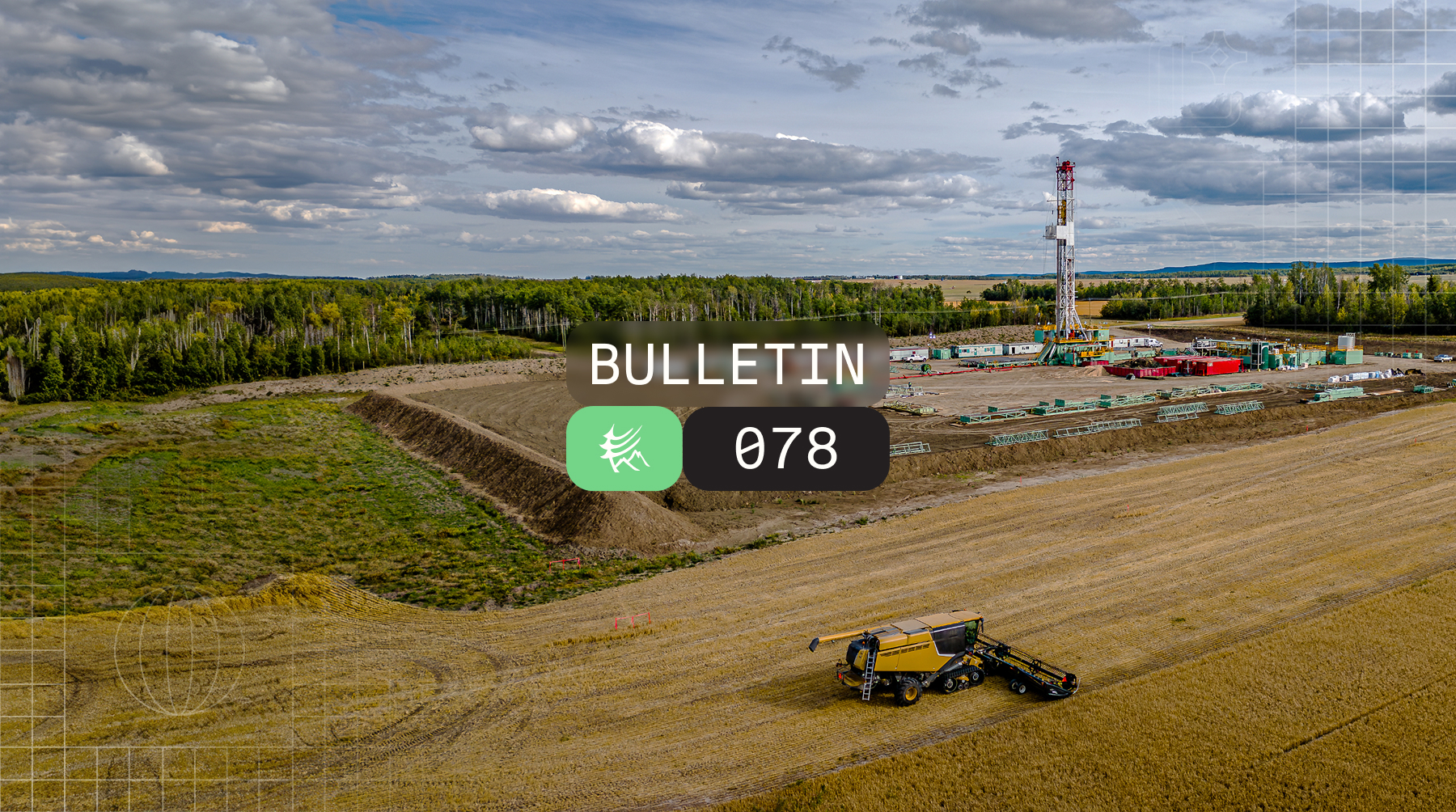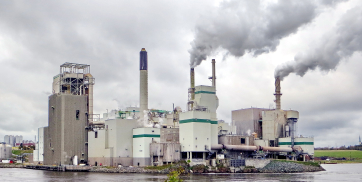With methane quantification research gaining momentum by the day, it was truly difficult to narrow this Research Digest down! In this edition, we recap the latest measurement-based inventory research, exciting progress on super-emitter quantification, and the latest results from satellite quantification, including the very first published results from NASA’s latest orbital emissions detection technology, EMIT.
First Orbital Emissions Observations from NASA’s EMIT
The first methane and carbon-dioxide observations from NASA’s EMIT imaging spectrometer aboard the international space station are presented. Emissions from energy-producing countries in the Middle East and Central Asia are analyzed. 88.7% of methane emissions in the countries analyzed here are from oil and gas, and 8.2% from the waste sector; the largest total country wide methane emissions are observed in Turkmenistan (731 tCH4/h). The authors indicate EMIT is almost 100 times more sensitive than TROPOMI, and demonstrate its ability to identify, geolocate, and quantify multiple emission sources in close proximity (<1 km). They conclude that these capabilities and EMIT’s 60m spatial resolution are needed to close carbon budgets here.
Super-Emitter Methane Estimation From Satellite Data in Algeria
Methane data from Sentinel-2 and TROPOMI satellite instruments are used to estimate 2020 emissions in Algeria; in the Hassi R’Mel gas field and oil-production-dominated Hassi Messaoud region. Emission time series are estimated for 11 super-emitters and combined with the remaining diffuse area. The analysis indicates that more of Algeria’s methane emissions (∼75%) come from oil production than nationally reported (5%). The authors state that due to the availability of global data from both TROPOMI and Sentinel-2, their system can be used in other regions, especially those with low cloud cover and uniform surface albedo such as Libya and Iran. They recommend that addressing the largest super-emitters can significantly reduce emissions in Algeria. However, they caution that the majority of sources are individually below the Sentinel-2 detection limit (1–2 t/h), meaning that optimal region-wide emissions reductions will likely require general infrastructure improvements beyond addressing the largest super-emitters here.
Geostationary Monitoring of Large Methane Sources
Large transient methane sources are monitored in the US using the Geostationary Operational Environmental Satellites (GOES). This work shows that GOES’s 1-2 km resolution can monitor very large methane point sources in the Americas with up to 5-min continuous coverage. The full evolution of an extreme methane release from a natural gas pipeline in Durango, Mexico on 12 May 2019 is tracked, totalling ~ 1200 tCH4 over 3 hours. The authors infer, from other detections, a detection limit of 10 to 100 t/h. The authors argue that due to extreme releases of methane often lasting less than an hour, as from deliberate venting, these would be difficult to identify and quantify with low-Earth orbit satellites. The results are described as highlighting the importance of developing dedicated geostationary satellite instruments to monitor greenhouse gasses, due to near-real-time detection of extreme methane point sources, here.
Upstream Measurement Based Inventories in Saskatchewan
Two comprehensive aerial surveys of upstream oil and gas infrastructure are used to derive measurement-based methane inventories in Saskatchewan, Canada. The authors observe that “Saskatchewan is the most methane intense oil and gas producer in Western Canada by a significant margin”. They state their results reveal the futility of relative reduction targets and argue that regulations should be designed to meet independently measurable emission intensities. They conclude by considering relevance of the impending import restrictions in the European Union here.
Hybrid Methane Inventories for Upstream Oil and Gas in Alberta
Two aerial surveys in Alberta, Canada, are used to develop a measurement-based, source-resolved, hybrid top-down/bottom-up methane inventory for upstream oil and gas. The authors state that derived methane intensities are approximately 4 times those in neighbouring British Columbia, highlighting the importance of independent monitoring, reporting, and verification in reducing emissions. With their source-resolved measurement-based inventory exceeding official estimates by 50%, the authors stress the importance of a third-party in monitoring, reporting, and verification (MRV) frameworks here.
Alberta Methane Measurements in Midstream, End-Use, and Upstream Facilities
Aerial mass balance measurements are conducted in Alberta at 16 upstream O&G facilities and 24 midstream and end-use facilities. Investigated sites are on average reported to emit 1.7 (upstream) and 3.4 (midstream/end-use) times more methane than reported. The authors underscore the importance of empirical measurements of midstream/end use emissions, stating that they are crucial for gap bridging measurement data. Observing that energy buyers are increasingly demanding O&G products with lower CH4 footprints, the authors stress the importance of measurement-based reporting instead of conventional emission factors multiplied by activity here.
Measurement-Based Emissions Estimates in the Delaware Basin
Two types of oil and gas equipment-based methane emissions inventories are compared for the Delaware Basin. One, using EPA emission factors, estimates emissions at 315 Gg CH4/y (0.6% gas loss). Another, using region-specific measurement data, estimated emissions of 1500 Gg CH4/y (2.8% loss). The researchers observe that the largest discrepancies resulted from, in descending order: Large fugitive emissions from oil production, updating maintenance activity emissions, considering flaring inefficiency, and the inclusion of associated gas venting. The authors suggest that “a systematic underestimate probably exists in current bottom-up inventories” and strongly recommend emission factors should be validated. They conclude by recommending areas of further development to mitigate the gaps between bottom-up and top-down methods: Dynamic emission factors/activity data, Temporal variability in emissions, Data collection frequency/latency/absence, Granular facility-level data collection, Data quality/reliability, Customized approach for different facilities in basin-wide models, Collaboration/data sharing, and Policy updates as deserving critical attention here.
Estimating Source Duration with Operational Data
A novel framework to estimate the duration of aerially detected methane emissions is presented. The authors discuss implementation of the framework, in which detected emissions may be estimated with engineering estimates, emissions factors, detection information, default durations, and/or operational data. The authors propose aircraft-based screening to enhance methane emission inventories, while noting the limitation of snapshot-based measurements. The complementary nature of the aircraft-based methane screening data and process data is underscored — the authors predict this combination will be important for understanding and quantifying emissions for emission inventories. They recommend that good policy design would consider evolving technology, novel techniques, and integrating multiple kinds of information here.
Investigation of GHG Emissions at Decommissioned Unconventional Wells in BC
Integrity of nine abandoned unconventional wells is investigated through emissions evaluation of surrounding soil in the Montney region of BC. The researchers observe that over half of the unconventional wells are potentially releasing both fugitive CO2 and CH4 into the surrounding soil, although CH4 is likely mitigated significantly by soil-based oxidation. They state the merits of further investigating natural soil-based CH4 mitigation. The authors conclude by recommending further monitoring and evaluation of unconventional well integrity in all relevant jurisdictions here.
Analysis of Low-Cost Fixed-Sensor LDAR Framework
A prototypical low-cost fixed sensor program framework is defined and considered from an operational perspective. Large operational costs are caused mainly by (i) follow-up callouts, (ii) nontarget emissions, and (iii) maintenance requirements; these are identified by the authors as areas for improvement. The authors discuss the issue of ineffective alerts in low-cost fixed sensors, suggesting better sensors, improved quality management, and better algorithms as potential solutions. However, they suggest a possible limit for program cost competitiveness. It is suggested that for cost competitiveness, regulators may need to allow flexibility to selectively ignore alerts; this presents a considerable challenge for regulators. Caution with presently available low-cost fixed sensor LDAR programs is recommended here.






